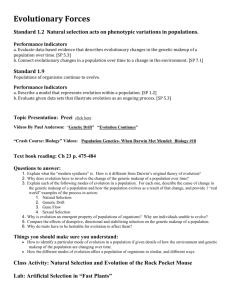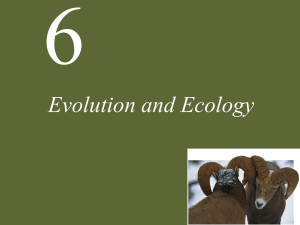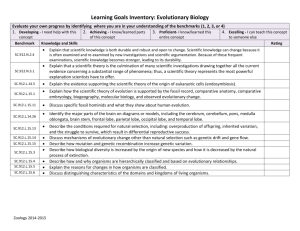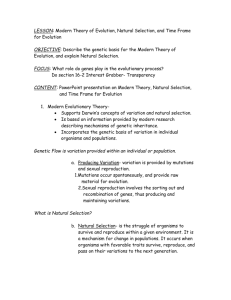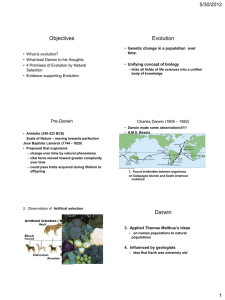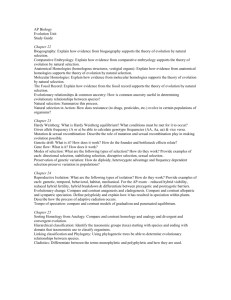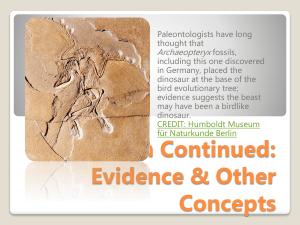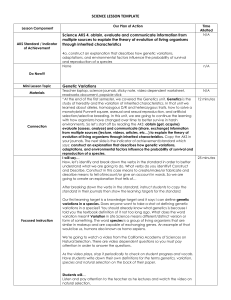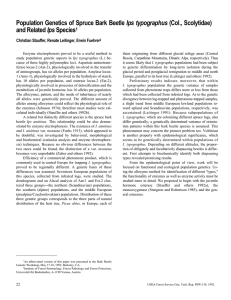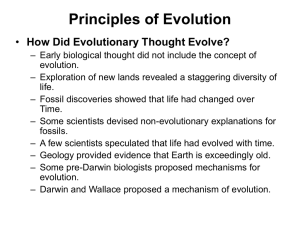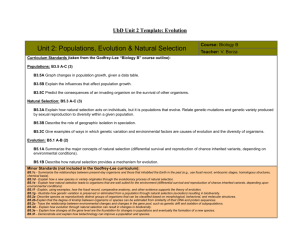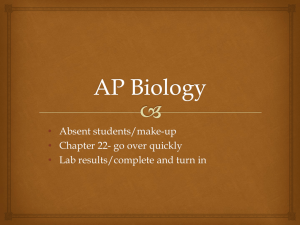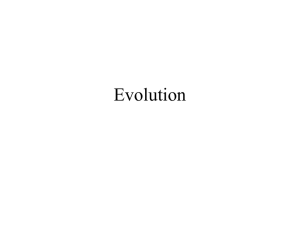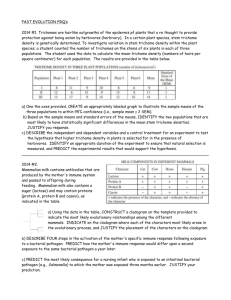BIOLOGICAL EVOLUTION OVERVIEW Some core points to recall
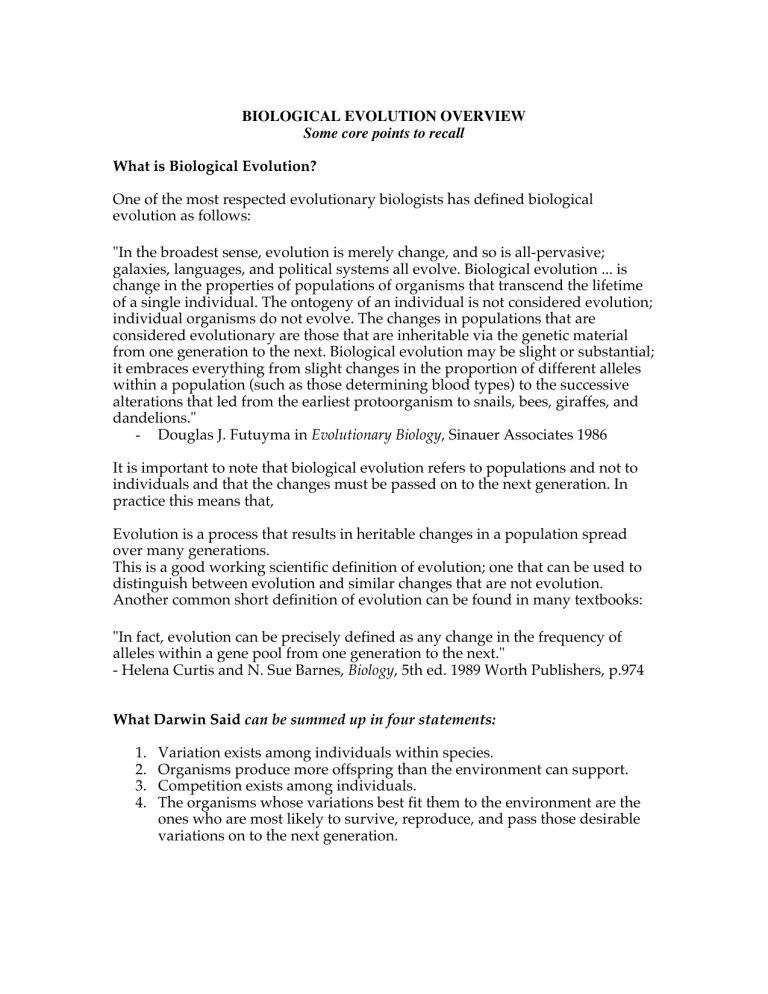
BIOLOGICAL EVOLUTION OVERVIEW
Some core points to recall
What is Biological Evolution?
One of the most respected evolutionary biologists has defined biological evolution as follows:
"In the broadest sense, evolution is merely change, and so is all-pervasive; galaxies, languages, and political systems all evolve. Biological evolution ... is change in the properties of populations of organisms that transcend the lifetime of a single individual. The ontogeny of an individual is not considered evolution; individual organisms do not evolve. The changes in populations that are considered evolutionary are those that are inheritable via the genetic material from one generation to the next. Biological evolution may be slight or substantial; it embraces everything from slight changes in the proportion of different alleles within a population (such as those determining blood types) to the successive alterations that led from the earliest protoorganism to snails, bees, giraffes, and dandelions."
Douglas J. Futuyma in Evolutionary Biology , Sinauer Associates 1986
It is important to note that biological evolution refers to populations and not to individuals and that the changes must be passed on to the next generation. In practice this means that,
Evolution is a process that results in heritable changes in a population spread over many generations.
This is a good working scientific definition of evolution; one that can be used to distinguish between evolution and similar changes that are not evolution.
Another common short definition of evolution can be found in many textbooks:
"In fact, evolution can be precisely defined as any change in the frequency of alleles within a gene pool from one generation to the next."
- Helena Curtis and N. Sue Barnes, Biology , 5th ed. 1989 Worth Publishers, p.974
What Darwin Said can be summed up in four statements:
1.
Variation exists among individuals within species.
2.
Organisms produce more offspring than the environment can support.
3.
Competition exists among individuals.
4.
The organisms whose variations best fit them to the environment are the ones who are most likely to survive, reproduce, and pass those desirable variations on to the next generation.
As a consequence of these facts, living things will change over time. Given enough time, these changes will be so great that whole new species of living things will appear on the earth.
Lines of Evidence for Evolution
• Fossil Evidence
• Homologies
Anatomical Homologies - Comparative Anatomy (e.g. forelimbs of tetrapods; vestigial structures, etc)
Embryological Development (e.g. baleen whales have teeth in early fetal stages; some snakes have hind limb buds during embryogenesis, etc.
Cellular/Molecular (e.g. cellular structures, DNA homologies)
• Distribution in time and space
Chronology ( relative dating of fossil containing rock strata; numerical dating of rocks using radioactive decay
Geography (distribution of animals and plants; Pangaea)
• Artificial selection as a model to understand natural selection
• Ecology – the ecosystem and its role in natural selection
• Experiments (e.g. the guppy experiments of John Endler: http://evolution.berkeley.edu/evolibrary/article/lines_15
• Nested hierarchies – clades and phylogenies
Mechanisms of Evolution
Genetic variation is key to evolution. Selective forces act upon the variations and ultimately lead to changing distributions of alleles in a population. In the long term and under appropriate selection pressures, new species may evolve.
Some of the mechanisms of evolution include:
• Descent and the genetic differences that are heritable and are passed on to the next generation.
• Mutation,
• Migration (gene flow),
• Genetic drift
• Natural selection
• Coevolution

